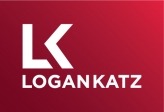
Canadian small business owners often invest excess corporate funds into investment vehicles within their corporation as part of their financial planning strategy. This can be advantageous because retaining these funds in their corporation defers the tax that would ultimately have been paid at the personal level, leaving more after-tax dollars to invest than if the funds were withdrawn by a shareholder and then invested at the personal level. The income earned through investments made within a corporation, such as dividends, interest, rent, and 50% of capital gains is considered passive investment income, also known as adjusted aggregate investment income (AAII) for tax purposes.
Canadian small business owners also benefit from a lower corporate income tax rate on active business income (ABI) earned within a corporation. The active business income of a corporation may be eligible for a lower corporate income tax rate through the use of the small business deduction (SBD). Canadian-controlled private corporations (CCPCs) are taxed at the small business rate (12.5% in Ontario) for the first $500,000 of active business income earned. CCPCs are taxed at the general rate (26.5% in Ontario) for ABI earned over $500,000.
New Tax Rules Pertaining to Adjusted Aggregate Investment Income
The advantage of investing excess funds within a corporation was perceived as unfair by taxpayers who do not have corporations and led to the recent introduction of new tax rules for AAII. The new rules, introduced as part of the 2018 federal budget, impose adverse tax consequences as a result of the AAII earned in a corporation by limiting the access to the SBD.
These new rules set a threshold of $50,000 of AAII that can be earned in a CCPC without adverse tax consequences. Thereafter, the SBD is reduced by $5 for every dollar of AAII that exceeds $50,000, earned in a corporation’s previous fiscal year. By way of example, if a corporation holds an investment portfolio of $1 million that generated interest income of 5%, or $50,000 in its previous year, it is not impacted by the new rules. If the investment portfolio generated interest at 7%, or $70,000 in its previous year, the excess of $20,000 would reduce the SBD available in its current year by $100,000 ($20,000 x $5).
Ontario chose not to parallel the federal measures to phase out the SBD. To illustrate the effect of losing the SBD, the following two rates need to be compared: The 2019 combined federal and provincial small business rate in Ontario is 12.5% (9% federal and 3.5% provincial). The 2019 combined federal and provincial rate on income subject to the SBD clawback in Ontario is 18.5% (15% federal and 3.5% provincial). Therefore, in 2019, the difference in combined tax rates between income subject to the clawback and small business income is 6%. When the small business limit of $500,000 is fully clawed back under the new rules, the increased annual corporate tax cost is $30,000 (6% x $500,000) for 2019 calendar-year corporations taxable in Ontario.
The combined federal and Ontario provincial tax impact for a 2019 calendar-year corporation with $500,000 of ABI, at varying levels of passive investment income is shown below:
| Passive Investment Income | Small Business Deduction Limit | Additional Tax Deduction Limit |
|
$50,000 |
$500,000 |
$0 |
|
75,000 |
375,000 |
7,500 |
|
100,000 |
250,000 |
15,000 |
|
125,000 |
125,000 |
22,500 |
|
150,000 |
0 |
30,000 |
Integration – Reduction of Tax Deferral
It is important to note that, conceptually, if all profits of a corporation are regularly paid out to Canadian shareholders, the additional tax cost is really a loss of a deferral of tax. Because of the integrated nature of our tax system, the tax cost is rebalanced with a tax savings at the personal level. Profits taxed at the small business rate, when paid out to individual Canadian shareholders, are considered non-eligible dividends. Non-eligible dividends are taxed at higher tax rates than eligible dividends, which are paid out of profits taxed at the general rate or amounts subject to the clawback. As a result, the net, after-tax profits retained by the shareholder after receipt of a dividend should resemble the previous tax rules.
Associated corporations
Similar to the requirement by associated corporations to share the small business deduction, associated companies are required to aggregate their AAII in assessing against the AAII threshold requirements. If the threshold is passed, the resulting reduced small business limit would need to be shared between the associated companies.
Applicability of New Rules
The new rules have limited applicability in the three situations described below:
- As the new rules limit access to the full SBD, corporations with an ABI that is less than their SBD limit are not affected. For example, if a corporation had $100,000 of AAII in its prior year, the SBD limit in its next fiscal year would be $250,000 (see table above). If the corporation’s ABI is $200,000, this is below the $250,000 limit, and the new rules have no impact on the corporation.
- As the new rules target ABI, corporations with no ABI, such as investment holding companies, are not affected by the new rules. Caution: if this corporation has an associated company, like a subsidiary corporation earnings active business income, the AAII of the holding company would need to be considered when calculating the SBD of the subsidiary.
- Finally, as its name suggests, the small business limit is not intended for large corporations. Special rules already exist to limit access to the SBD for large corporations having greater than $10 million of taxable capital in Canada and restrict access altogether for corporations with taxable capital in Canada exceeding $15 million. As such, the new rules have no impact on large corporations that would otherwise not have access to the SBD.
Tax Planning
Small Business Deduction Assessment and Planning
It is important to asses the availability of the small business deduction before any tax planning is considered. Ensuring that your corporation has access to its SBD and establishing the amount available is a crucial part of determining optimum owner manager remuneration. Any salary paid to an owner reduces the business income subject to the new rules.
Timing of realizing accrued gains
As there is no further penalty once $150,000 of AAII is reached, consider the timing of realizing accrued gains. It may be worthwhile to realize accrued gains in a year where AAII is already expected to be greater than $150,000. As well, it may be worthwhile to realize accrued gains in a year where active business income is expected to be low.
Investment expenses
Since the calculation of passive investment income includes investment income net of related expenses, consider which expenses could be included in this calculation. Interest, investment counsel fees, and reasonable salaries paid to owners to manage/track the investments may all qualify to reduce AAII.
Other Strategies
Consider placing corporate passive investments into a vehicle that is excluded from the passive investment income rules, such as an exempt life insurance policy or an individual pension plan. Also consider other ways to limit the corporation’s passive income. Savings can be held at a personal level using registered retirement savings plans (including spousal), tax-free savings accounts and registered educational savings plans. Please note, these strategies should only be applied after careful consideration and discussion with both financial and tax advisors.
***
Although the new rules serve to further limit tax planning opportunities, there are still some useful tax planning measures to consider implementing. It is imperative to asses the availability of your SBD, consider the timing of realizing accrued gains, examine expenses which can reduce AAII, limit your corporation’s passive income and more. These tax tips can result in considerable savings for business owners. For more information on how to take advantage of these tips to help you minimize your taxes, contact us. We are here to help.

This article has been written in general terms to provide broad guidance only. It should not be relied upon to cover specific situations and you should not act upon the information contained herein without obtaining specific professional advice. Please contact our office to discuss this information in the context of your specific circumstances. We accept no responsibility for any loss or damage resulting from your reliance on the information in this article.
Author

Partner
